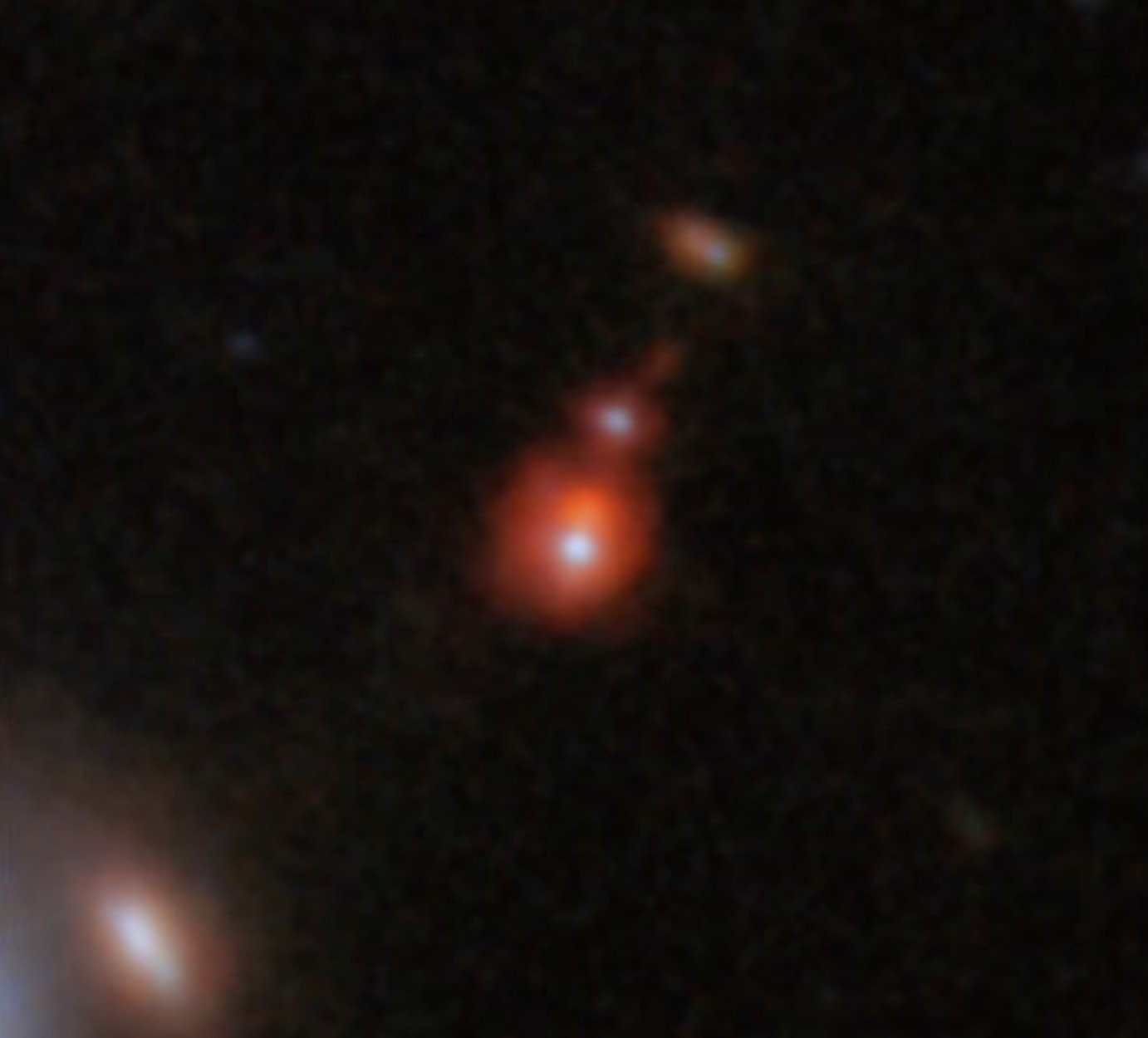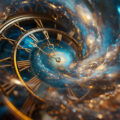Astronomers report the discovery of the most distant black hole merger ever observed, with help from NASA’s James Webb Space Telescope (JWST).
The ongoing merger between a pair of galaxies, known as ZS7, and their massive black holes is believed to date back to a period when the universe was a mere 740 million years old. This offers astronomers new clues about the early evolution of the universe and the formation of black holes.
Possessing masses millions or sometimes even billions of times the mass of our Sun, supermassive black holes reside at the heart of most large galaxies, including the Milky Way. Astronomers have long understood that these black holes and their relationship to the evolution of galaxies remain mysterious.
Now, the findings made possible by the Webb telescope are providing new clues to astronomers, suggesting that they may grow far more quickly than current models predict. While expanding our understanding of the conditions that give rise to black hole formation, the findings are also challenging our accepted understanding of their dynamics and development over long periods.
Some of our most fundamental questions about cosmology relate to black holes, which are the largest, most luminous, and, by many measures, the most powerful objects in the universe. The immense gravity exerted by black holes cannot be escaped by any matter lingering nearby, which gives rise to the process astrophysicists call accretion, where powerful jets of particles are released by black holes in the form of radiation as they grow. These high-energy events can thereby influence the development of stars and galaxies nearby.
Based on the new Webb telescope findings, evidence for the ancient and very distant ZS7 merger comes via the observation of spectrographic signatures of massive black holes actively accreting matter, which are difficult to perceive with telescopes based on Earth.


University of Cambridge researcher Hannah Übler, the lead author of a recent study detailing the findings, said she and her colleagues discovered evidence for “very dense gas with fast motions in the vicinity of the black hole,” along with hot and highly ionized gases that became luminous as a result of the intense radiation produced by the accretion process.
With the impressive resolution of the Webb imagery, Übler and her colleagues achieved a technological first by successfully visualizing the two merging black holes, a feat once impossible.
The team’s discovery has significant implications, particularly in terms of understanding processes that occurred very early in our universe. Already, several of the observations that Webb has helped astronomers achieve are raising questions about the formation of galaxies, which, at some of the greatest distances ever observed by humans, do not appear to conform to our expectations for galactic formation.
Specifically, Übler and her team have produced data that could potentially unveil new insights into the ways black holes and galaxies co-evolve and what factors might quicken their growth rate.
Going forward, additional observations made possible by Webb will likely uncover evidence of similar events, providing important context for astronomers about the underlying dynamics of these powerful mergers and new perspectives on what role black holes play in the development of the universe.
Among the key aspects of black hole mergers is their production of gravitational waves, which will become more easily detectable with observatories like the forthcoming Laser Interferometer Space Antenna (LISA) mission. It is set to become the first space-based observatory with the sole function of studying these enigmatic energy-carrying waves and their propagation through space.
LISA Lead Project Scientist Nora Luetzgendorf of the European Space Agency in the Netherlands said that Webb’s current findings are already helping reveal that “lighter systems detectable by LISA should be far more frequent than previously assumed,” adding that future observations will “likely make us adjust our models for LISA rates in this mass range.
Übler said in a statement that her team’s findings are serving as the basis for new findings that will likely reveal crucial discoveries toward understanding the role black holes play in galactic formation.
“Together with other Webb findings of active, massive black holes in the distant Universe, our results also show that massive black holes have been shaping the evolution of galaxies from the very beginning,” Übler said.
Micah Hanks is the Editor-in-Chief and Co-Founder of The Debrief. He can be reached by email at micah@thedebrief.org. Follow his work at micahhanks.com and on X: @MicahHanks.

